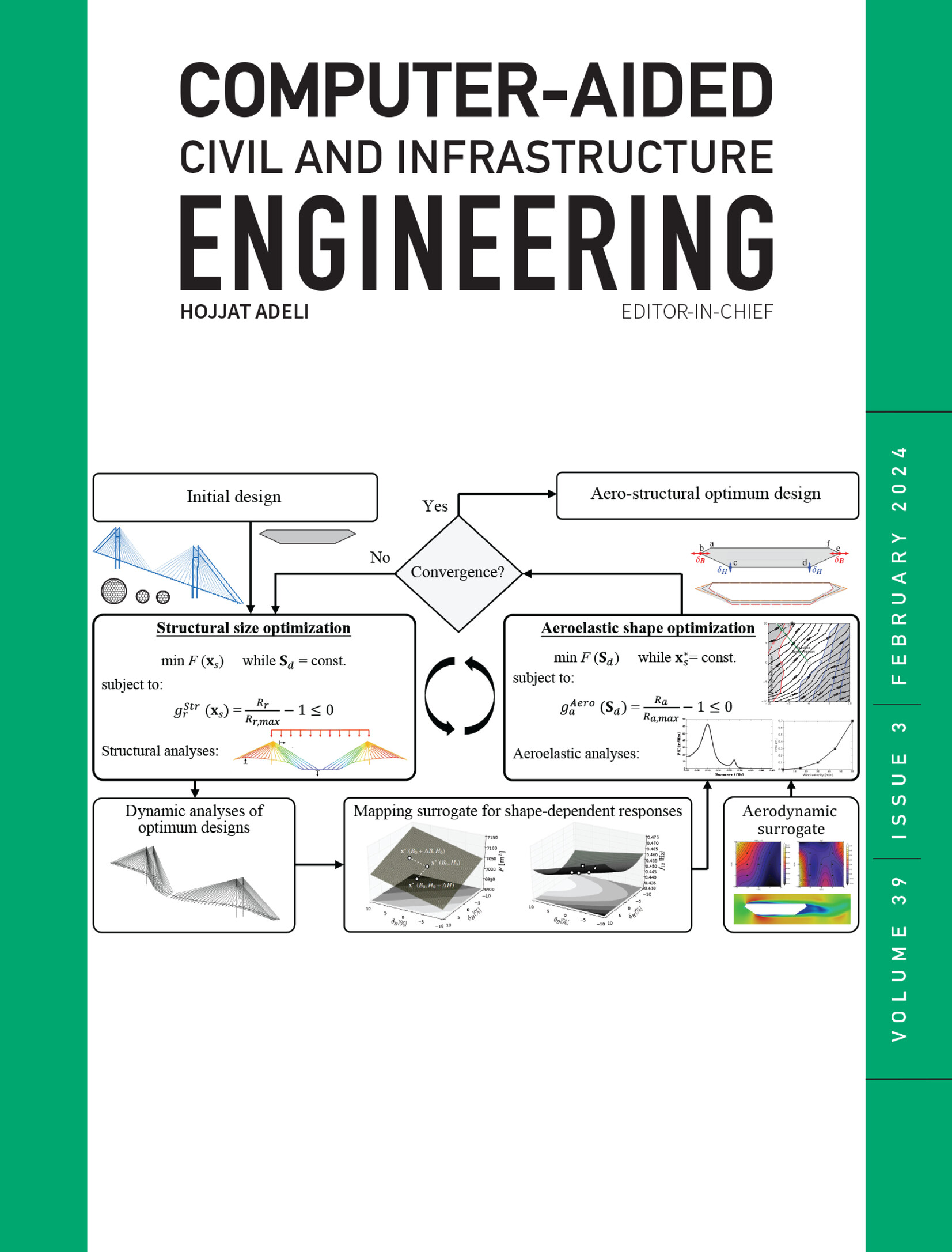基于建筑信息模型的地下设施机器人检测自动路径规划策略
IF 9.1
1区 工程技术
Q1 COMPUTER SCIENCE, INTERDISCIPLINARY APPLICATIONS
引用次数: 0
摘要
本文提出了一种基于建筑信息模型(BIM)的地下设施(如管道)完全自动化的端到端检测路径规划策略。开发了一种自动提取方法来处理BIM模型中的公用事业信息,使用将每个管道与其相应的公用事业分支配对的注册步骤。随后通过偏移算法进行几何修改,考虑障碍物的尺寸,以生成安全的导航路径。提出了一种新的检测算法——效用-中国邮差问题(U - CPP),用于生成拓扑图并保证全覆盖检测。Dynamo原型集成了所有这些算法,最大限度地减少了人工干预,实现了全过程自动化。该方法通过三个具有不同横截面配置的现实世界实用BIM模型进行了验证。U - CPP算法以最小的重复率实现100%的覆盖率,并在24、23和23 ms内计算出优化的检测路径。结果表明,该策略可以有效地实现信息提取和全覆盖路径规划的自动化。U - CPP算法被证明是鲁棒的,计算效率高,在处理不同的公用事业配置时有效。本文章由计算机程序翻译,如有差异,请以英文原文为准。
Automated path‐planning strategy for robotic inspection of underground utilities based on building information model
This paper proposes a fully automated end‐to‐end inspection‐path‐planning strategy for underground utilities, such as pipelines, based on building information modeling (BIM). An automatic extraction method is developed to process utility information from BIM models, using a registration step that pairs each pipeline with its corresponding utility branch. This is followed by geometric modification via offset algorithms that account for obstacle dimensions to generate safe navigation paths. A novel inspection algorithm, the utility‐Chinese postman problem (U‐CPP), is introduced to generate a topological map and ensure full‐coverage inspection. A Dynamo prototype integrates all these algorithms, minimizing manual intervention and achieving full‐process automation. The method is validated with three real‐world utility BIM models featuring diverse cross‐sectional configurations. The U‐CPP algorithm achieves 100% coverage with minimal repetition rates and computes optimized inspection paths in 24, 23, and 23 ms. Results demonstrate that the proposed strategy efficiently automates both information extraction and full‐coverage path planning. The U‐CPP algorithm proves to be robust, computationally efficient, and effective in handling diverse utility configurations.
求助全文
通过发布文献求助,成功后即可免费获取论文全文。
去求助
来源期刊
CiteScore
17.60
自引率
19.80%
发文量
146
审稿时长
1 months
期刊介绍:
Computer-Aided Civil and Infrastructure Engineering stands as a scholarly, peer-reviewed archival journal, serving as a vital link between advancements in computer technology and civil and infrastructure engineering. The journal serves as a distinctive platform for the publication of original articles, spotlighting novel computational techniques and inventive applications of computers. Specifically, it concentrates on recent progress in computer and information technologies, fostering the development and application of emerging computing paradigms.
Encompassing a broad scope, the journal addresses bridge, construction, environmental, highway, geotechnical, structural, transportation, and water resources engineering. It extends its reach to the management of infrastructure systems, covering domains such as highways, bridges, pavements, airports, and utilities. The journal delves into areas like artificial intelligence, cognitive modeling, concurrent engineering, database management, distributed computing, evolutionary computing, fuzzy logic, genetic algorithms, geometric modeling, internet-based technologies, knowledge discovery and engineering, machine learning, mobile computing, multimedia technologies, networking, neural network computing, optimization and search, parallel processing, robotics, smart structures, software engineering, virtual reality, and visualization techniques.

 求助内容:
求助内容: 应助结果提醒方式:
应助结果提醒方式:


